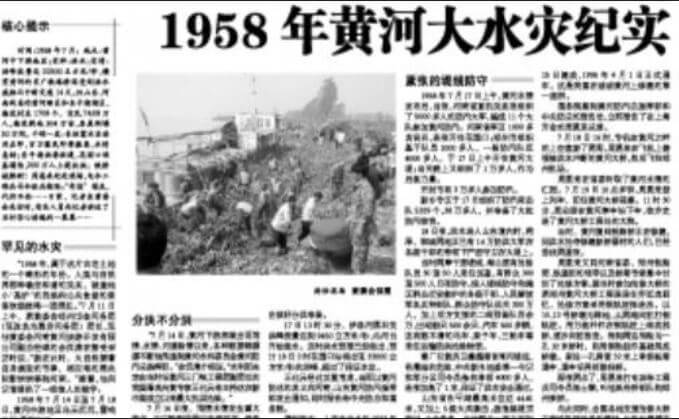From July 14 to July 18, 1958, heavy rains occurred in the middle and lower reaches of the Yellow River. The Yellow River Bridge fell under the torrent, and the Beijing-Guangzhou railway was interrupted for 14 days. In Shandong and Henan provinces alone, 1,708 villages were inundated by flooding. Officially, the number of victims was 740,800.
At the same time, during the Great Leap Forward Movement, "focus on storage" became the main theme for irrigation. From 1957 to 1959, more than 100 reservoirs were built in Zhumadian, Henan alone. In addition, Mao Zedong initiated the "Learn from Dazhai in agriculture" campaign; this required land reclamation and terraced fields, which in turn greatly reduced forestation and vegetation coverage, and caused severe soil erosion. All these led to the failures of many Henan reservoir dams in 1975, which killed more than 200,000 people, the largest death toll by flooding in the history of the People's Republic of China.
References: [河南法制報 ("Henan Legal Daily")(Chinese)] (http://newpaper.dahe.cn/jrab/html/2009-07/13/content_199329.htm); [南方週末("Southern Weekly")(Chinese)] (https://news.ifeng.com/history/1/200703/0308_335_85521_2.shtml); [中國能源報 ("China Energy News")(Chinese)] (https://web.archive.org/web/20200506135100/http://paper.people.com.cn/zgnyb/html/2012-08/27/content_1103439.htm)
